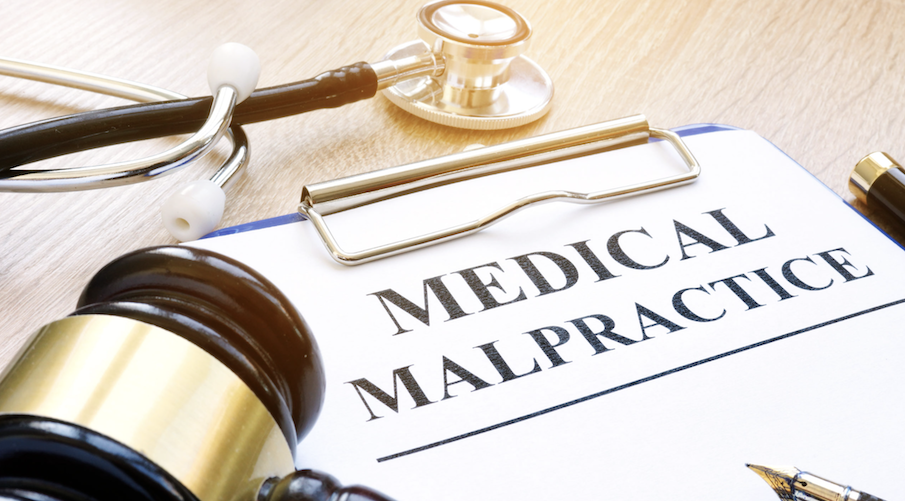Most of us have had questionable or strange encounters with medical professionals.
We might have even gotten some bad advice.
But at some point, mistakes and “bad advice” constitute medical malpractice, so where do you draw the line?
The Definition of Medical Malpractice:

Let’s start by defining what medical malpractice is, and the different ways it can manifest.
Medical malpractice, according to the American Board of Professional Liability Attorneys (ABPLA), happens when “a hospital, doctor or other health care professional, through a negligent act or omission, causes an injury to a patient. The negligence might be the result of errors in diagnosis, treatment, aftercare or health management.”
As with all negligence claims, there are several things you’ll have to prove in a court of law to demonstrate that medical malpractice has occurred. These include:
1. Proving a violation of standard care.
You’ll need to prove that a given medication, treatment, or other behavior is “standard care” and that you didn’t receive this “standard care.”
For example, if you complain to your doctor about heart palpitations and they brush you off as if they don’t believe you, this is much different than what a standard, properly trained doctor would do.
2. Proving a causal link to an injury.
Next, you’ll need to demonstrate that this act of negligence directly resulted in an injury or some kind of damage.
For example, did the doctor prescribe a medication that then made your symptoms worse?
3. Proving the injury and its resulting damages.
You’ll also need to prove that the injury was sustained and find a way to quantify the damages.
Because the definition of medical malpractice is so vague and far reaching, it can be difficult to conceptualize.
It’s perhaps best understood through examples:
Failure to diagnose.
If your doctor has all the information necessary to diagnose you with a condition, but fails to offer a diagnosis, that’s often considered malpractice.
Misdiagnosis.
Medical malpractice could also mean getting the wrong diagnosis, followed by the wrong treatment plan.
Surgery errors.
Mistakes happen during surgery, but if those mistakes cause damage or are considered negligent, they count as malpractice.
Unnecessary surgery.
The same is true if a doctor recommends a surgery that “standard care” would find unnecessary or unwarranted.
Prescription errors.
There are many ways a prescription can be mishandled. For example, you may be prescribed the wrong medication, the wrong dosage of medication, or a medication that harmfully interacts with an existing medication.
Insufficient follow up care.
Inadequate or negligent follow up care can also be malpractice.
Improper testing procedures.
If a doctor fails to order the proper tests, or if there are errors in testing, that doctor could be held liable for the resulting damages.
What to Do If You Suspect Malpractice?
You don’t have to be a medical professional to suspect malpractice.
If you feel like your doctor isn’t listening to you, if your symptoms are getting worse, or if you just have a weird feeling about the care you’re getting, you should take your hunch seriously.
There are several steps you should take if you suspect malpractice.
1. Remain calm and logical.
You might be upset at your healthcare providers for putting you in a worse situation, but it’s important to remain calm, logical, and reasonable.
Avoid arguing with your current doctor or creating issues unnecessarily.
You should also avoid giving your doctor the benefit of the doubt just because they’re your doctor, every doctor is a human being, capable of errors and negligence.
Don’t let your attachment or trust prevent you from seeking compensation.
2. Start collecting evidence.
Next, collect as much evidence as you can.
Document your appointments with your healthcare professionals, document what they recommend for you, and detail your symptoms and the progression of your injuries and conditions. The more details you have, the better.
3. Get a second opinion.
If you’re unhappy with your doctor’s recommendations, seek a second opinion, most competent medical professionals will encourage you to do this as well.
The second opinion will sometimes validate the suggestions of your original healthcare provider, but you might also find out that your original doctor is deviating from standard care.
Finding a secondary provider is also important to prioritize your health and get the treatment you need.
4. Talk to a lawyer.
Reach out to a lawyer if you suspect medical malpractice in any form.
They can help clarify ambiguities and give you direction on how to move forward.
What You Should Remember?
As for everything in life, it’s always best to not make an emotional choice. Even in cases where a doctor’s negligence is clear, medical malpractice cases can be complicated. So using your reasoning and logic is paramount.
It might be even harder for doctors when they need to check up on patients and diagnose them virtually because of the pandemic.
It’s not always easy to prove that malpractice has happened, and even good lawyers struggle to win cases without a surplus of evidence.
If your situation is ambiguous, or if you’re just looking for advice on what to do next, talking to a lawyer is likely your best option.
